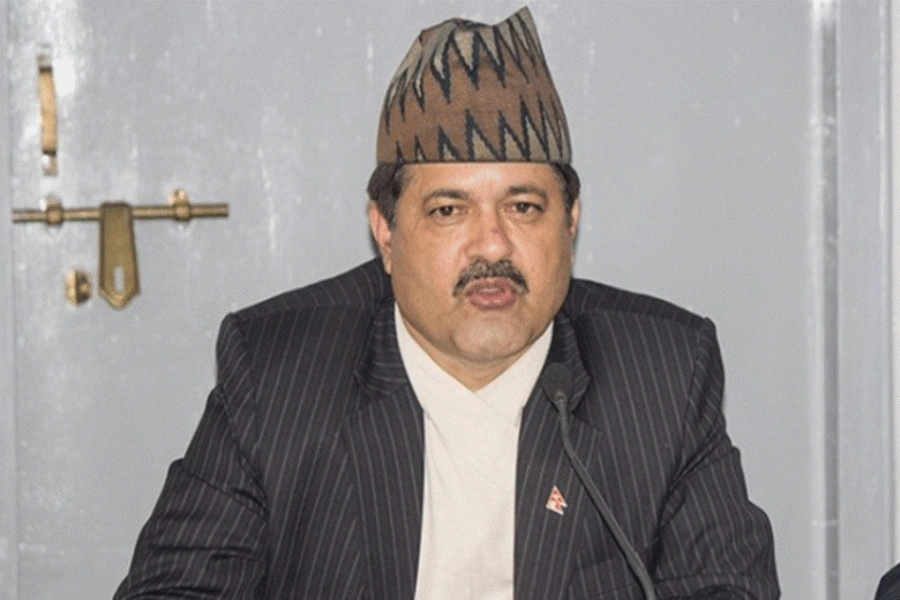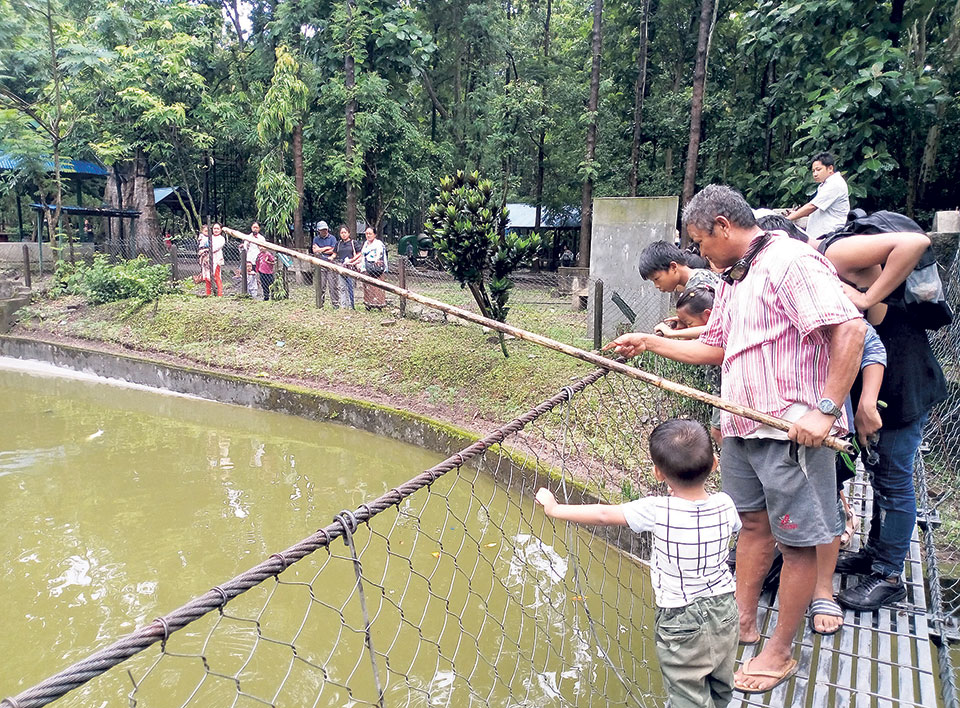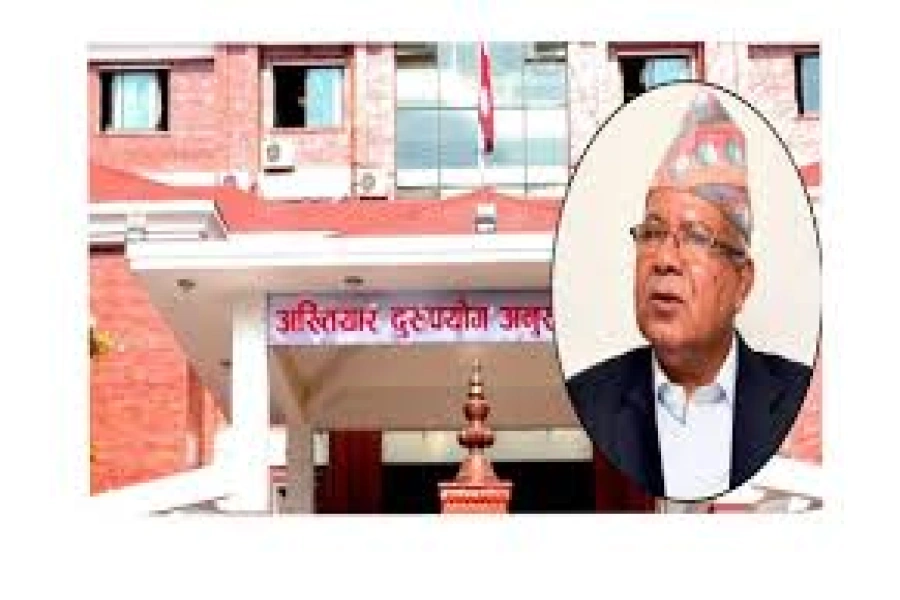Forest for people
Influenced by geographical and climatic variations, there are at least 54 forests or woodlands identified by the Ecosystem and Forest Types Mapping Program under the Ministry of Forest. Each forest has different physiology, productivity, and disturbance and thus has different timber and non-timber advantages. These forests should be managed in different models to get the best out of them.The most prominent forest management model in Nepal is the community forest (CF) model. It manages 2.49 million hectares of land which is more than 37 percent of the total forest area. Yet, wood-based enterprises are compelled to import forest products. It is because there is limited supply of wood from the CF due to complicated regulations associated with the transparent commercialization and haulage of forest products. In addition, there is also an inadequacy of localized silvicultural guidelines and management procedures for forests in different vegetational divisions. The only valid guideline to describe the local characteristics of the forest and to define the relevant silvicultural treatment is the Operational Plan of the respective community forest (CF). However, there is a common practice of adopting (copying and pasting) the same operational plan for most of the community forests irrespective of the difference in nature, composition, productivity, and values of the respective CF. Such practice has been intimidating the commercial growth and utilization of forest resources. In addition, most CFs focus on the salvage of dead, dying and decaying trees only rather than an active timber harvesting. The salvaged wood has a questionable structural quality to engineer them into building materials. They obviously have compromised flexibility, hardness, and durability in comparison to the timber from a healthy mature tree. A tree is meant to be harvested before it undergoes physiological depreciation and pathological vulnerability. However, CFs are compelled to let the heart of the tree rot before they can harvest, thanks to the forest regulations.
Undoubtedly, the CF user groups are highly diligent and motivated social groups with a wide range of indigenous knowledge of forest management. However, they still lack the technical expertise and silvicultural foundation for active forest management. There is some support and facilitation from the District Forest Office. However, they are not effective enough, especially during harvest, storage, and haulage.
Forests for wildlife
Forest guard fire aerial shots to disperse timber smugglers

Nepalese forests can generate money, a lot of money. Under current circumstances, forests under protection are economically the most productive forests. Covering more than 23 percent of total forest, protected forests have generated more than Rs 5 billion of direct annual revenues through royalty, entry fees, and amenity services. However, the income may not balance the equation if we sincerely consider variables such as human – wildlife conflicts and forest fires. Let me dissect it. With forest, comes wildlife. Inevitable existence of wildlife is the major threat to the settlement residing in the proximity of the forests. The death and injury due to wildlife attacks from tiger, elephant, leopard, bear, snake, and so on is a liability of forest, however, the forest rarely takes its responsibility. In addition, tonnes and tonnes of crops are damaged every year and hectares of agricultural land are left fallow due to the consistent threat of detrimental damage of crops. The loss devastates the sentiment and economy of local farmers, especially those from the marginalized groups of disadvantaged communities. There have been more than 12 thousand reported incidents including 58 registered deaths last year, excluding snakebites. From the fear of tiger in Bardia to the sorrow of Bahundangi, if we consider the loss, the revenue generated from protected forest is not even enough to cover the compensation of losses. Most victims don’t even bother to apply for the compensation money anyway, thanks to the complicated process. On top of it, the psychological ramification on the local people caused by constant anticipation of fierce encounters with wildlife is beyond the economic figures.
The protection of forest and wildlife requires a lot of money and effort. We can definitely earn returns. However, without international fundings, we can barely protect them. I now have a serious doubt here. Who are we actually protecting the forest for? Is it for the wildlife and the people who are an integral part of the forest ecosystem and indigenous heritage? Is it for a loaded entrepreneur who has luxuriant business inside the forest and forest policy inside his pocket? Or is it for the dollar offerings which eventually lands into a large pocket of the big black coat?
Forest for donors
Besides biodiversity and wood, carbon sequestration is one of the responsibilities of dynamic forest. Following the path of carbon-negative Bhutan, Nepal is also greening positively with more than 45 percent of total land already forest and shrubland. Currently, the estimated carbon stock in our forest is 1 billion 55 million tons. Nepal has the ambition to sequester 9.16 million tons of carbon dioxide until 2024 accumulating more than 45 million dollars in lieu during the process according to the REDD implementation center. By 2028, Nepal aims to be carbon negative with a proposed sequestration of more than 34 million tons of carbon dioxide. This will involve a direct as well as indirect control and limitation on forest usage. As a result of the carbon ambition, an unfavorable influence will be generated on the utilization of forest resources in the form of firewood and timber. It is a challenging ambition to achieve when more than half of the population is still using firewood as a main source of energy. In addition, the high import figure of timber to meet the market demand is also demonstrating the unpreparedness for the REDD implementation. Ironically, if we are importing timber, we are not cutting OUR forest, we are cutting SOMEONE else’s forest, we are dumping rubbish in other’s gates to keep our home clean.
Talking about REDD+ and carbon sequestration, the Government of Germany provides result-based payment as a part of REDD+ financing in countries like Brazil, Colombia, and Ecuador. The same government harvested more than 2.7 billion cubic feet of timber last year, providing more than 170 billion Euro turnover and generating 1.3 million jobs in the process. They are also launching a ‘climate-adapted forest management’ course – Me witch, witch doctor myself. This makes me think whether a climate action and forest industry can coexist or is carbon sequestration just a rich country propaganda.
Contrastingly in Nepal, forests are made scapegoats in the name of airport and fast-track construction. Such systematically conspired deforestation from the government causes permanent and non-repairable forest degradation. In addition, the uncoordinated road constructions (infamous as dozer terrorism), especially in rural hills, not only triggers landslide and soil erosion, but also releases large amounts of carbon back to the atmosphere. The infrastructural development at the expense of forest and agricultural land releases significantly more carbon than an active timber harvest followed by regeneration would do. Well, at least the money from timber sales would be white.
What next?
Forest Development Projects like Sagarnath, Nepalgunj, and Ratuwamai are failed examples and have always been politically used to slander large-scale plantation projects. Even though they failed because of the insufficient research and some political motives, the takeaway message was still valid. Plantation forests are necessary to supplement the supply of forest products from CFs. Someone said, the best time to plant a tree was 20 years ago, and the second-best time is now. In addition to plantation forests, the development of agroforestry systems around the community forests can also be another simple yet remarkably effective way to reduce the pressure on fodder, firewood, and carbon sequestration from CFs.
Lastly, it is good to see the policy makers acknowledging the need for legal reforms, especially to attract the private sector in forestry, and recognising the necessity of timber treatment plants and seasoning facilities. Around Rs 13 billion has been allocated to the Ministry of Forest and Environment. Hopefully, we won’t have to see government departments, like always, chewing up their budget as an office operational cost. A healthy forest industry through sustainable forest management can only be achieved from an integrated and inter-departmental effort of the REDD+ implementation center, the Department of Forest and Soil Conservation, Nepal Ban Nigam, and CFs.






































